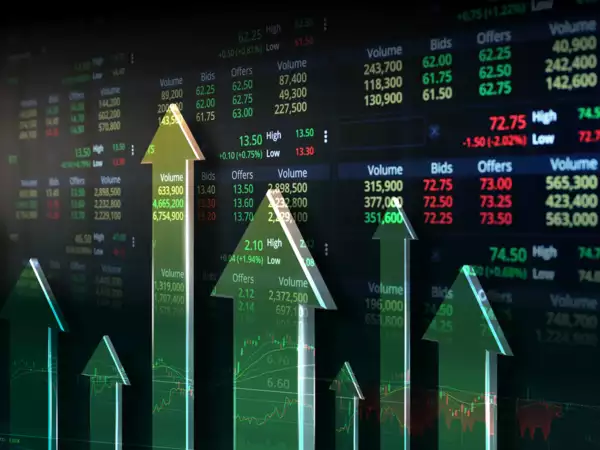Saudi Stock Market Dips 1.18% as Oil Falls, Tariff Fears Grow
On April 3, 2025, the Saudi Arabian stock market closed in the red, with the Tadawul All Share Index (TASI) falling 1.18%. The decline came amid growing concerns over global economic stability, dropping oil prices, and the announcement of sweeping U.S. trade tariffs, which rattled investor confidence across the region.
The drop was mainly driven by underperformance in key sectors such as Energy & Utilities, Financial Services, and Telecoms & IT — three pillars of Saudi Arabia’s economy. Major players like Saudi Aramco and Saudi National Bank experienced noticeable losses, pushing the index lower.
Market Performance: Oil Slump Hits Energy Stocks
The Tadawul All Share Index’s 1.18% fall represents one of its sharpest single-day declines in recent weeks. The primary reason for the drop was a fall in oil prices, which slipped as much as 3% during the trading session.
Saudi Aramco, the world’s largest oil producer and a cornerstone of the TASI, saw its shares decline by 0.8%. Lower oil prices were fueled by fears that rising global tensions — especially around trade — could slow down economic activity worldwide, reducing demand for oil and other energy products.
Saudi Arabia, being a top oil exporter, is particularly vulnerable to shifts in global oil demand. Therefore, any significant dip in oil prices immediately reflects in the performance of its stock market, particularly in energy-heavy indices like the TASI.
Sectoral Breakdown: Financials, Energy, and Telecoms Weaken
In addition to energy stocks, the Financial Services sector also suffered. Saudi National Bank, the kingdom’s largest bank, fell by 1.5%. The drop reflects investor anxiety over how global economic pressures might impact credit markets, loan performance, and consumer activity in the coming months.
Meanwhile, the Telecoms & IT sector added to the market’s overall weakness. Although individual stock figures weren’t highlighted in reports, the sector’s contribution to the day’s losses signals broader concerns about future consumer and business spending in the digital space, especially if economic uncertainty persists.
The Energy & Utilities sector mirrored oil’s trajectory, with several firms either posting flat results or modest declines. Overall, the losses across these critical industries painted a picture of caution and caution-driven selling.
Regional Perspective: Gulf Markets Move in Sync
Saudi Arabia’s market decline wasn’t an isolated event. Markets across the Gulf region also posted losses, indicating that global economic developments are creating a ripple effect across oil-exporting nations.
Dubai’s main stock index dropped by 1.8%, dragged down by a steep 8.9% fall in Emaar Properties. This sharp decline came after the stock traded ex-dividend, meaning investors were no longer entitled to the company’s upcoming dividend payout — a typical but impactful reason for sudden price drops.
Abu Dhabi’s market also fell, closing 0.8% lower. These moves demonstrate that investors across the region are wary of not just local factors but also broader global events, especially those related to oil prices and trade policies.
Global Context: Trump’s Tariffs Shake Investor Confidence
The broader sell-off was sparked in part by a major policy announcement from U.S. President Donald Trump. The U.S. introduced new trade tariffs, including a base 10% tariff on all imports, along with even higher duties targeting major trading partners. The aim, according to the White House, is to protect American industries and reduce the trade deficit.
However, global investors see this move as a potential trigger for wider trade wars. If retaliatory tariffs follow — as is likely — global trade could slow, supply chains could be disrupted, and global economic growth could weaken.
For countries like Saudi Arabia, which depend heavily on oil exports, such global slowdowns pose significant risks. Lower demand for oil means lower revenues and weaker corporate earnings, especially for state-linked giants like Aramco.
Investor Sentiment: Risk-Off Mode in Play
These developments have pushed investors into a more cautious, risk-averse stance. Many are moving funds into safer assets or sitting on cash while waiting for more clarity on the direction of global trade and commodity prices.
Sentiment in the Saudi market appears fragile, with traders closely monitoring global news. Any further dip in oil or escalation in trade tensions could lead to more selling pressure. Analysts are urging investors to diversify their portfolios and consider hedging strategies to protect against further volatility.
Looking Ahead: What Should Investors Watch?
The outlook remains uncertain. Several key factors will determine how the Saudi and broader Gulf markets perform in the near term:
- Oil Price Trends – Any sharp rebound or further decline in crude oil prices will directly influence regional markets.
- Global Trade Policy – If the U.S. and its trading partners move towards negotiation rather than confrontation, investor confidence may recover.
- Economic Data – Investors will watch for macroeconomic indicators like inflation, employment, and GDP growth in major economies.
Saudi policymakers may also consider steps to stabilize markets if volatility continues. Possible measures include reassuring statements from key officials, stimulus measures, or regulatory adjustments to support key sectors.
Conclusion
The Tadawul All Share Index’s 1.18% slide on April 3, 2025, is a reflection of the growing uncertainty in global financial markets. Between falling oil prices and fears of a trade war, investor sentiment has clearly taken a hit. With major Saudi stocks like Aramco and Saudi National Bank under pressure, the index is showing signs of stress.
As Saudi Arabia navigates a complex international landscape, all eyes will remain on global economic signals — particularly those affecting oil demand and trade dynamics. The coming weeks will be crucial in determining whether this was just a temporary correction or the start of a longer period of market adjustment.
Do follow gulf magazine on Instagram
for more information click here



